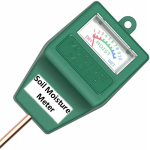Getting Started in Desert Pots

When first starting a new garden, my advice is to keep it simple and grow from there. As soon as we over complicate something, we tend to get overwhelmed. When that happens, we often throw our hands up in the air and STOP.
The best chance of success is to take on a smaller project and complete one step at a time, relatively quickly. This success will provide the satisfaction of something growing and pleasing to the eye along with our senses of smell, touch and sounds.
Location, Location, Location

- Study how the sun moves in your yard.
- Consider how it will change as the sun moves through the seasons.
- Choose a spot that will get 5 to 6 hours of sun a day, all year long.
Know your Zone
- Look up your hardiness zone. Find out your hardiness zone.
In many areas, elevation will play a big part in your temperatures. However, if you are in a community that is Zone 9 and you are at a higher elevation than the majority of that zone, you will be colder.
- Talk with your local Cooperative Extension Master Gardener program and local nurseries to see what to expect.
Consider the Water Source
- Decide how you will water.
- If irrigating the pots:
- Make sure you have a dedicated pot line.
- Try to not run it under hardscape.
- Handwater

- Locate your pots close to a hose bib
- Group your pots closely together to make watering easier.
- FYI, 5 gallons of water weighs over 40 pounds so you will be able to give up your gym membership in this scenario.
Start with great soil
- Chose a good potting “soil” with a mixture of peat moss, composted bark, compost, earthworm castings, perlite, and pumice. It smells rich and earthy, never “poopy” or like manure.
- When you grab a handful, it is moist but does not clump and certainly does not fall away like sand.
Choose the right plants.
Consider:
- The amount of sun they will receive
- How much water they need
- How much room they need to grow
- Their rate of growth.
The most critical decision is to make sure you choose plants that need similar amounts of sun and water when placing them together in a pot and grouping them in your yard.
Learn your earliest and latest freeze dates.
- Check out your average freeze dates by this link. Adjust for your elevation and micro-climates.
Water and Feed Plants Consistently
Water
You will find that I harp on watering. And I do mean, A LOT!
- Never let the soil dry out in your pots.

- If you are in a rush to get going, go out and buy a water meter and check your moisture level regularly every morning before you water.
- Once you get a handle on how much water your pots need, you can follow your set routine.
- Be sure to adjust the frequency as temperatures rise and fall.
Food
- Each time you plant new flowers, edibles and other plants in pots, use a time-release fertilizer.
- Once you see signs of new growth, start using a water-soluble fertilizer every two weeks.

